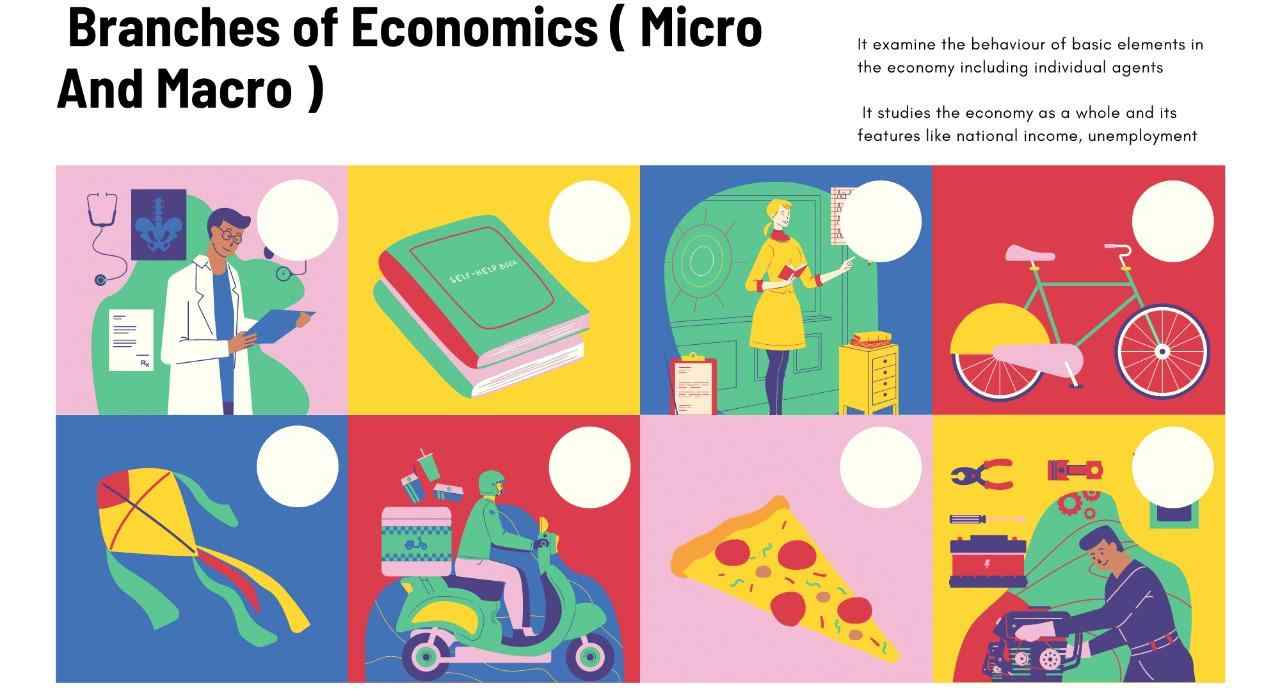What are the two branches of economics
Their are two branches in the economics section. Micro and Macro Economics. Microeconomics deals largely with the decision-making behavior of individual consumers and firms in markets, while macroeconomics focuses largely on the aggregated behavior of all consumers and firms in an Economy.
Branches of Economics –
Micro Economics : It examine the behaviour of basic elements in the economy including individual agents (such as households and firms or as buyers and sellers) and market and their interaction.
Macro Economics : It studies the economy as a whole and its features like national income, unemployment, poverty, balance of payments and inflation. It deals with formulation of models explaining relationship between factors such as consumption, inflation, savings, investment, national income and finance.
Difference Between Micro and Macro Economics –
|
Micro Economics |
Macro Economics |
|
It is that branch of economics which deals the economic decision making of individual economic agents such as the producer, the consumer etc. |
It is that branch of economics which deals with aggregates and averages of the entire economny. E.g.. aggregate output, national income, aggregate savings and investment, etc |
|
It takes into account small components of the whole economy. |
It takes consideration the economy of the country as a whole. |
|
It deals with the process of price determination in case of individual products and factors of production. |
It deals with general price – level in any economy. |
|
It is known as price theory |
It is also known as income theory. |
|
It is concerned with the optimization goals of individual consumers and producers |
It is concerned with the optimization of the growth process of the entire economy. |
|
Consumer goods |
Captical Goods |
Perishable Goods |
Durable goods |
|
Consumer goods directly satisfy human needs. |
Capital goods are not directly satisfy the consumer needs. However they help to produce consumer goods. |
Perishable goods are short-lived. Their life span is limited. |
Durable and Semidurable goods have a little longer life-time than the Perishable goods. |
|
Example:- TV, Furniture, Automobile etc. |
Example : – Heavy Machine do not directly satisfy the Consumers, but they are intended to manufacture Consumer goods. |
Example :- Fish,Fruits do not have a long life. |
Example : – Furniture etc. |
WPI ( Whole Price Index )
- Whole Sale Price Index (WPI) is an indicator of price changes in the wholesale market. WPI calculates the price paid by the manufacturers and wholesalers in the market. WPI measures the changes in Commodity price at selected stages before goods reach to the retail level.
- The Various Commodities taken in to Consideration for Computing the WPI can be categorized into Primary article, fuel and power and manufactured goods.
- Manufactured Products 64.2%
- Primary articles = 22.6%
- Fuel and Power = 13.1%6
- WPI is released by office of Economic Affairs, Ministry of Commerce and Industries.
- Consumer Price Index represents the average Price of a basket of goods over time. CPI calculates the average price paid. by the Consumer to the Shopkeepers. Because of the wide disparities in the Consumption baskets for different segment of Consumers, India has adopted different CPIs.
- CPI for Industrial workers (IW) – Released by labour Bureau, Ministry of labour and Employment.
- CPI for Agricultural labourers (AL) / Rural laboures (RL) – Released by labour Bureau, Ministry of labour and Employment.
- CPI (Rural / Urban / Combined)- Released by CSO (Central Statistics office, Ministry of Statistics and Programme Implementation).
- In India, RBI uses CPI (Combined) released by CSO for inflation Purpose with base year as 2012.
|
PPI |
WPI |
|
PPI Measuers the average change in prices received by the producer and excludes indirect taxes. |
WPI capturess the price changes at the point of bulk transactions and may include some taxes levied and distribution costs upp to the stage of wholesale transactions. |
|
PPI weights are drived from supply use table |
WPI weights are based on net traded value. |
|
PPI does not have multiple counting of items |
WPI Sometimes lead to double counting of items. |
|
PPI includes both Goods & Services. |
WPI does not cover services. |
